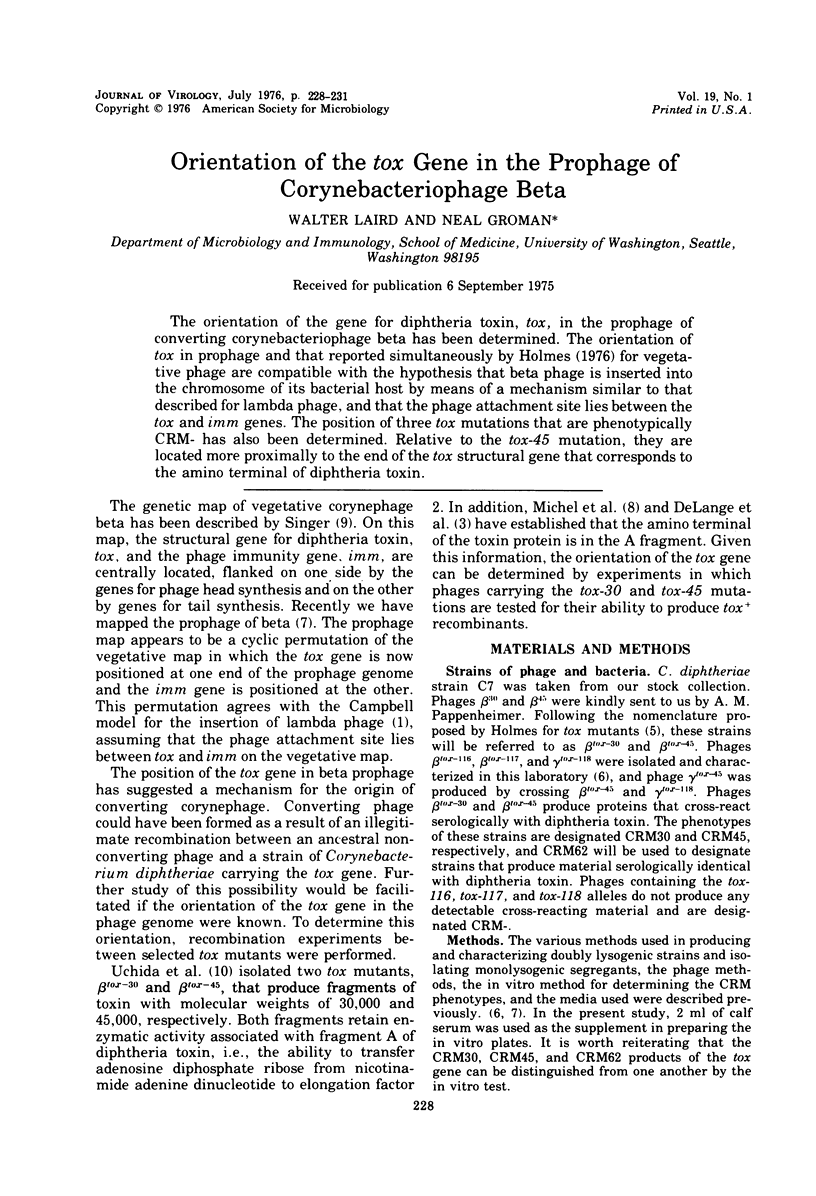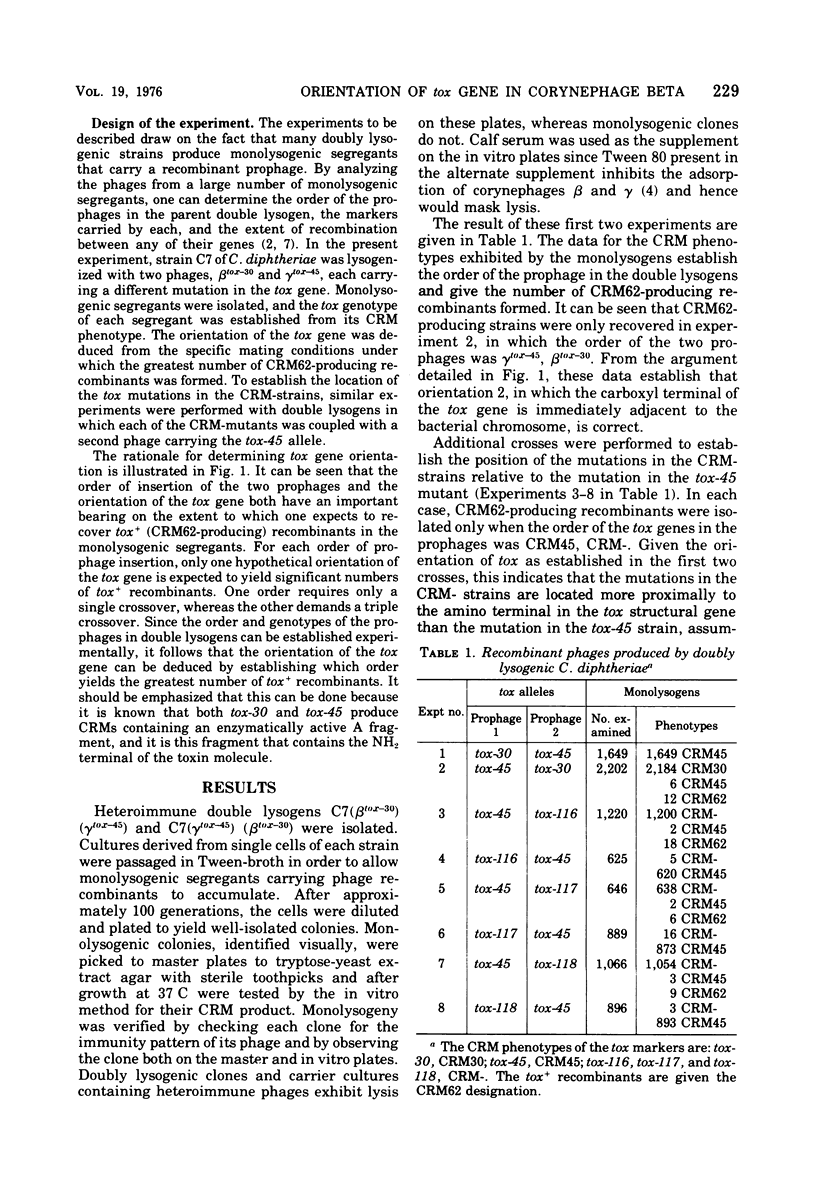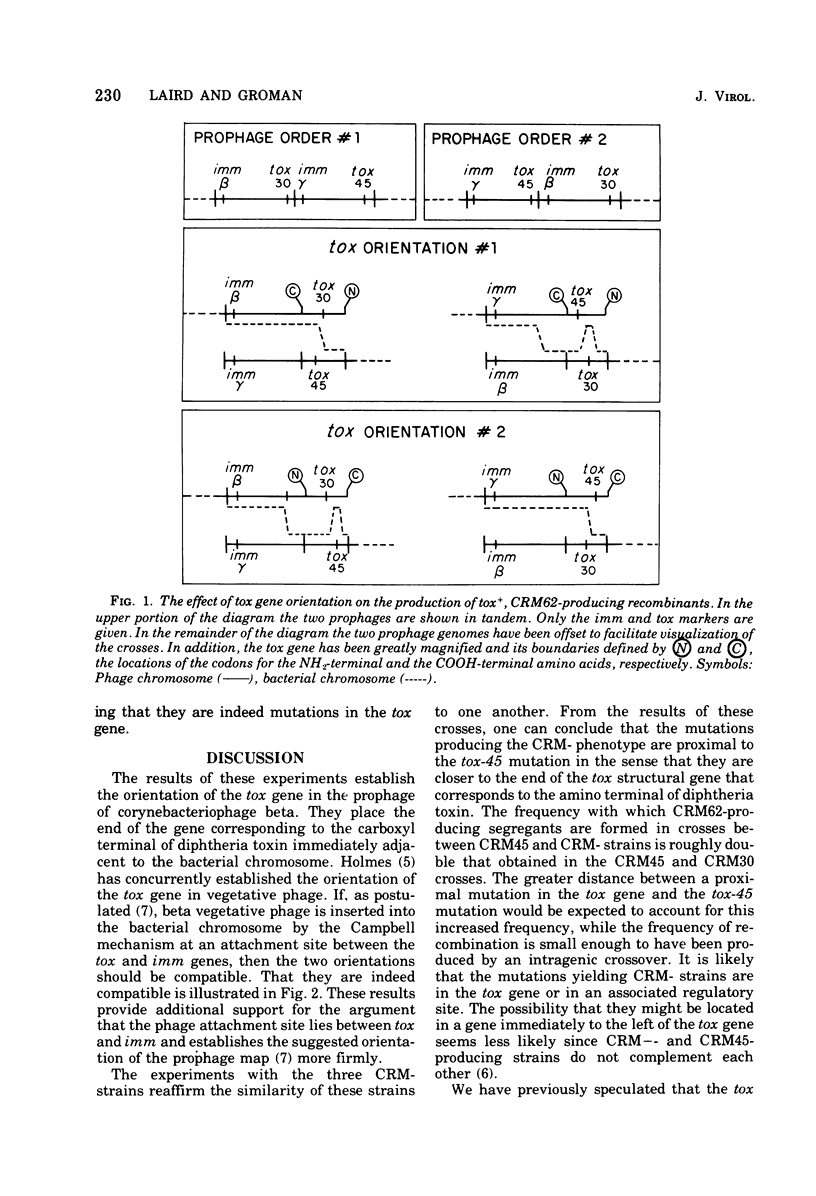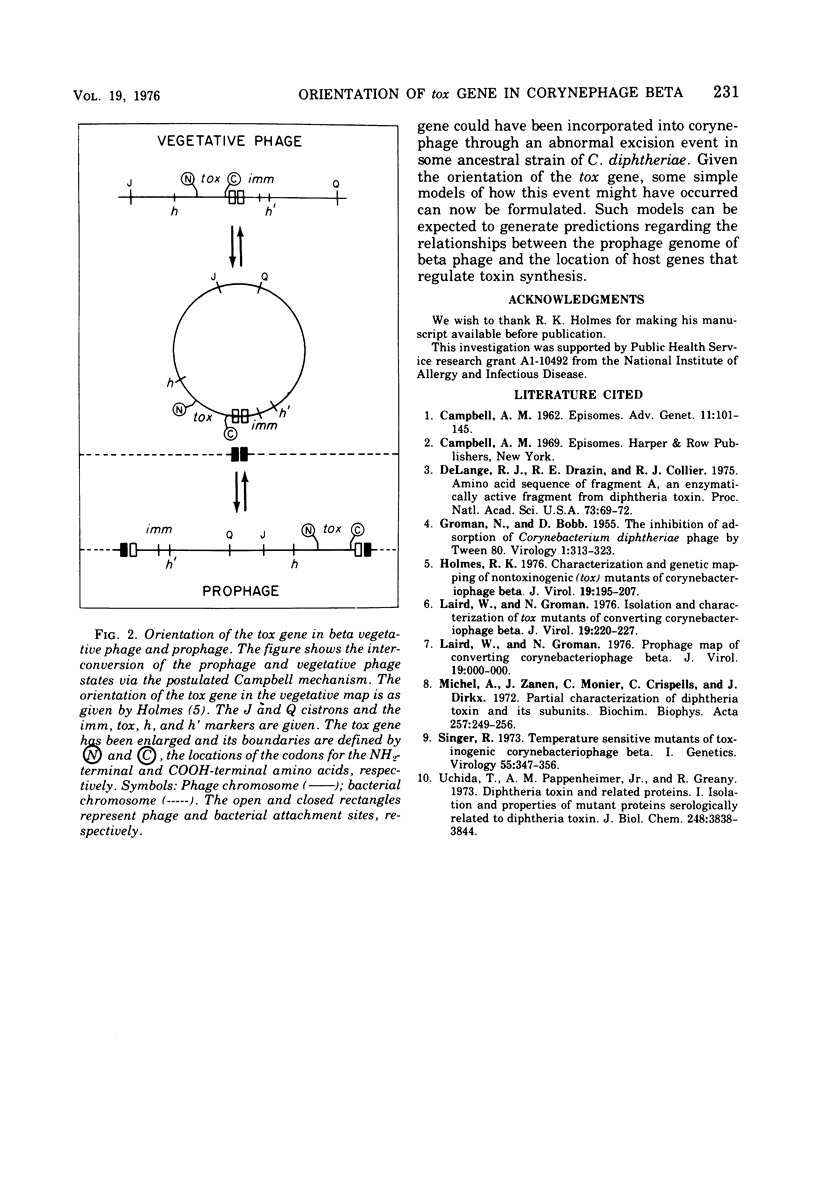Abstract
The orientation of the gene for diphtheria toxin, tox, in the prophage of converting corynebacteriophage beta has been determined. The orientation of tox in prophage and that reported simultaneously by Holmes (1976) for vegetative phage are compatible with the hypothesis that beta phage is inserted into the chromosome of its bacterial host by means of a mechanism similar to that described for lambda phage, and that the phage attachment site lies between the tox and imm genes. The position of three tox mutations that are phenotypically CRM- has also been determined. Relative to the tox-45 mutation, they are located more proximally to the end of the tox structural gene that corresponds to the amino terminal of diphtheria toxin.
Full text
PDF



Selected References
These references are in PubMed. This may not be the complete list of references from this article.
- DeLange R. J., Drazin R. E., Collier R. J. Amino-acid sequence of fragment A, an enzymically active fragment from diphtheria toxin. Proc Natl Acad Sci U S A. 1976 Jan;73(1):69–72. doi: 10.1073/pnas.73.1.69. [DOI] [PMC free article] [PubMed] [Google Scholar]
- GROMAN N. B., BOBB D. The inhibition of adsorption of Corynebacterium diphtheriae phage by tween 80. Virology. 1955 Sep;1(3):313–323. doi: 10.1016/0042-6822(55)90027-1. [DOI] [PubMed] [Google Scholar]
- Holmes R. K. Characterization and genetic mapping of nontoxinogenic (tox) mutants of corynebacteriophage beta. J Virol. 1976 Jul;19(1):195–207. doi: 10.1128/jvi.19.1.195-207.1976. [DOI] [PMC free article] [PubMed] [Google Scholar]
- Laird W., Groman N. Isolation and characterization of tox mutants of corynebacteriophage beta. J Virol. 1976 Jul;19(1):220–227. doi: 10.1128/jvi.19.1.220-227.1976. [DOI] [PMC free article] [PubMed] [Google Scholar]
- Michel A., Zanen J., Monier C., Crispeels C., Dirkx J. Partial characterization of diphtheria toxin and its subunits. Biochim Biophys Acta. 1972 Feb 29;257(2):249–256. doi: 10.1016/0005-2795(72)90276-0. [DOI] [PubMed] [Google Scholar]
- Singer R. A. Temperature-sensitive mutants of toxinogenic corynebacteriophage beta. I. Genetics. Virology. 1973 Oct;55(2):347–356. doi: 10.1016/0042-6822(73)90174-8. [DOI] [PubMed] [Google Scholar]
- Uchida T., Pappenheimer A. M., Jr, Greany R. Diphtheria toxin and related proteins. I. Isolation and properties of mutant proteins serologically related to diphtheria toxin. J Biol Chem. 1973 Jun 10;248(11):3838–3844. [PubMed] [Google Scholar]


